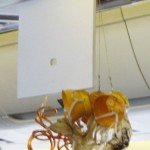Depressurization
[audio:https://inglesaviacao.com/wp-content/uploads/2012/07/16depressurization.mp3]
Depressurization – The Need, Types and Management
Depressurization is the reduction of air pressure in the cabin of an aircraft. Sudden depressurization can result from a failure in the pressurization system, a structural failure or can be initiated deliberately by a crew member of the aircraft.
Failure of the pressurization system is the most common cause of sudden depressurization. Malfunction of the engine or compressor, structural failures like incomplete or faulty sealing of doors, windows or cabin wall follow.
It is necessary to know why the cabin is pressurized in the first place to appreciate the importance of the task. Aircrafts fly at high altitude to avoid bad weather and turbulence. The air pressure at such high altitudes is extremely low and can make the human body uncomfortable. As the air pressure reduces, the pressure of the blood in the veins tends to rise and cause headaches, ear aches and other issues. It is essential to control the air pressure at such high altitudes to ensure that the human body stays comfortable. During landing the pressure is gradually lowered to match the air pressure outside.
 There are three types of depressurization techniques – explosive, rapid and gradual. Explosive depressurization only occurs in small aircrafts at high altitudes and takes less than a second. Rapid depressurization occurs in larger aircrafts and takes a few seconds. Gradual depressurization takes longer than the other two.
There are three types of depressurization techniques – explosive, rapid and gradual. Explosive depressurization only occurs in small aircrafts at high altitudes and takes less than a second. Rapid depressurization occurs in larger aircrafts and takes a few seconds. Gradual depressurization takes longer than the other two.
The effects of sudden depressurization can be hazardous. It can cause hypoxia, barotraumas, leading to pain and sickness. Although depressurization has seldom been associated with fatalities it can light headedness, blurred vision, headache, nausea, tingling in the extremities, pain in teeth, sinuses, teeth, and even bleeding from the ear drum.
While the cabin is depressurized while landing, there are times when this happens automatically in case of an issue. At such times, oxygen masks need to be used to aid in proper breathing. When the crew depressurizes the cabin on purpose, they should ensure that adequate oxygen is available for the passengers before the reduction of pressure is initiated. In most cases, when there is an issue with the pressure in the cabin, the pilot may just decide to descend to a lower altitude. When the situation is more crucial an emergency landing may also be requested from a nearby airport.
Questions and Answers
Please indicate if the following statements are true or false:
Pressurization inside an aircraft is mandatory at high altitudes.
- Sudden depressurization is normal and is required while descending.
- Sudden depressurization always leads to emergency landing and fatalities are common.
- Depressurization can be uncomfortable only for individuals who suffer from health problems.
- The procedure that the crew follows after sudden depressurization includes using oxygen masks and descend to a lower altitude.
Answers:
1) True
2) False
3) False
4) False
5) True















